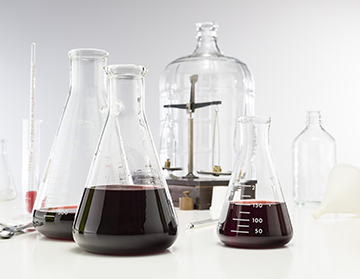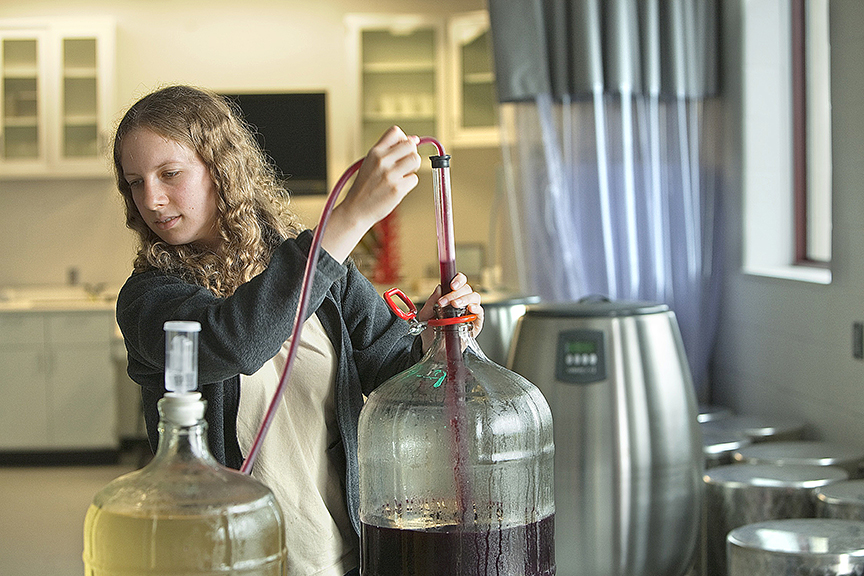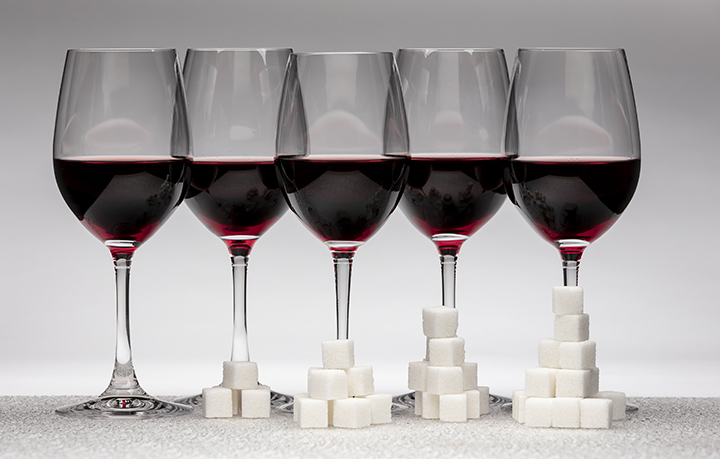Home Winemaking Quality Control
When the editors at WineMaker suggested quality control (QC) for a story, I was delighted to take it on. I have a long personal and professional history with QC and it infuses most of my activities — including my fermentation hobbies. Before joining the world of winemaking, I put my chemistry degree to work in environmental testing laboratories. The 1980s were filled with efforts to improve quality and consistency of analytical results, so sound decisions could be made about environmental contamination and cleanup. I volunteered as part of a continuous quality improvement group that published in the journal of the American Society for Quality. We were adapting the statistical quality control processes of manufacturing to a data-generating service industry. In my home winemaking, I do not generate enough data points to practice statistical quality control, but the concepts of QC and continuous quality improvement still apply.

I consider quality control as the assessment of a finished product or service to determine its “fitness for use.” That is, measurement to determine that it has met specifications, complies with requirements, or satisfies the expectations of a customer. Quality assurance (QA) refers to the creation and maintenance of systems that help improve the likelihood that a product will satisfy requirements. Inherent to both QA and QC is the principle of sound documentation. One of the mantras for quality professionals is, “if it isn’t documented, it didn’t happen.” We may not need to go that far in home winemaking, but if you keep it in mind you will find it easier to make better wine.
For this story, I consider measurement, verification, process improvement, and documentation all within the concept of quality control. Over my decades of working in the field I ran across many definitions for QA, QC, total quality management (TQM) and so forth. Here we will just call it all QC and the end customer for the fitness of use — the ultimate wine drinker to be satisfied — is you, the home winemaker!
The development of QC practices for an individual’s home winemaking hobby mirrors the historical development of QC. Before the middle ages, “fitness for use” was determined on an individual craftsperson basis: You made something and it worked for the customer or it didn’t. If it didn’t, you lost market share and your livelihood. Not a very efficient program, it required close personal knowledge to produce successful transactions. When you start to make wine at home, this may be a lot like what you do. You come across some grapes or you buy an ingredient kit. You read as much as you can, maybe watch some videos, and make your first batch. If you like it, congratulations! You achieved fitness for use. But you have not made much progress toward a system for assuring a successful outcome for next time.
The next stage of historic quality development emerged with guilds. Throughout Europe, groups of craftsmen would form local organizations — guilds — devoted to the manufacture of a particular kind of product. Products produced by guild members would be marked with a readily identifiable guild mark that declared the guild’s assurance for fitness of use. With a program of apprentice, journeyman, and master crafters, the guild took responsibility for a common level of quality in finished goods. In your area, you may find a local club of home winemakers. Many of these clubs sponsor group projects, contracting for larger quantities of grapes and engaging several club members in joint wine production. If you join one of these, you will find it a rewarding “apprenticeship.” Other club members can act as the “master” winemakers and help you advance your skills. Along with helping assure the production of good wine, they will introduce you to the value of documentation.
I consider quality control (QC) as the assessment of a finished product or service to determine its “fitness for use.”
In the 12th century, King John of England appointed William of Wrotham to take charge of royal shipbuilding, including an assignment to write about the processes used in shipyards. (I mention him here not only because of his early example in documenting methods and quality of production, but also because King John was so confident in William that he also put him in charge of purchasing the royal wine!)
And that is the next stage for your QC development as well: Documentation. Many home winemakers use a bound notebook, recording grape observations, wine product additions, lab results, and so forth as they occur. Others, particularly those who use several barrels, will attach a record sheet to each barrel to record such things as topping up, sulfite additions, and sulfite testing results. Because I make cheese, beer, cider, and charcuterie in addition to wine, I keep notes on a lined pad on a metal clipboard. I put the hobby subject at the top of each page, record data within each hobby sequentially by date, and then file the loose sheets from time to time in subject-specific three ring binders. My loose-leaf system allows me to move from hobby to hobby in real time, but build my archives in subject-specific binders for later look-up.
Beyond documentation, the industrial revolution and then the post WWII years brought about statistical data collection and analysis. By the time I was practicing formal QC, computers were beginning to dominate these areas. You may find that a spreadsheet will help you keep track. If you are good with graphing software, it may be useful to plot variables like the drop in sugar during fermentation or maintenance of sulfite levels over time. Anything that helps you make better wine the next time is a worthwhile QC tool.
What is “fitness for use” in home winemaking? When you start, it may just be drinkable wine. As you progress in the hobby, you may want to make a specific style of wine or achieve particular flavor, aroma, and appearance characteristics. When you realize that you are formulating more specific objectives for your wine, you are advancing your own QC program. First, record your grape or juice plans. If you control the growing, record information about pruning, trellising, pest control, and veraison (the coloring-up stage of the grapes). Even if you do not grow the grapes, get as involved as you can. If you know the grower, visit the vineyard. Document your own observations and ask the grower to share theirs. Write your harvest plan, or the corresponding plan for receiving purchased grapes or juice.
Next, make a wine plan. Note your anticipated volume of production and the characteristics you are looking for in your wine. A few years ago I purchased some Primitivo grapes from Musto Lanza Vineyards in Suisun Valley, California. Primitivo and Zinfandel grapes are virtually indistinguishable, but Primitivo wine is often made in an Italian style. I chose to do that, rather than make a California-style Zinfandel. That plan influenced my later decisions for producing my wine. After planning, keep detailed fermentation records during production. Include observations about the grapes or juice, timing and quantities of fermentation product additions, temperatures of the ambient environment and of the wine itself, and results of tests for aspects like sugar, acid, pH, and sulfite.
That last area, lab testing, comes the closest to my experience with commercial QC. To make good decisions about your wine, you need good analytical data. That means you need to calibrate your equipment and record the calibration. Before assessing the grapes, check your refractometer with a commercial 20 °Brix sugar solution. Write down when you did it and what the outcome was, whether the instrument needed to be adjusted or not. Calibrate your pH meter at pH 4 and 7 and document doing so. In commercial laboratories, the pH meter is calibrated daily or more often. At home, I calibrate at least once per week during periods of use. For more complex testing, like acid titration or free sulfite testing, one good quality check can be to compare methods or laboratories. Run the test by more than one method and compare results until you are satisfied with your consistency. If you do not have that capability, find a friend or fellow club member who can split a sample with you to help each other with QC. Another option is to send a sample to a commercial or university lab and compare their results with yours. Write it all down.
Ultimately, when you have finished making the wine, you determine “fitness for use.” Your most important customer is you: Do you like your wine? To go beyond the individual artisan level, you need to get other evaluations. You can serve the wine to friends and family and then record their comments. On a more formal level, you can get together with other home winemakers and sit down for an evaluation of everyone’s wines. Use a score sheet like the UC-Davis 20-point scale, taste each wine individually, and record the results. The most objective way to receive evaluation by experienced tasters is to submit your wine to competition. While you may have different stylistic objectives than the judges, their scores and comments can help you produce clean, well-made wine with every batch.
While making similar wine from year to year is supported by good documentation, it is especially valuable for intermittent projects. You want to make excellent wine, not just drinkable wine. A bit of attention to QC and documentation can help keep you on that path. Planned processes beat lucky chance every time!






